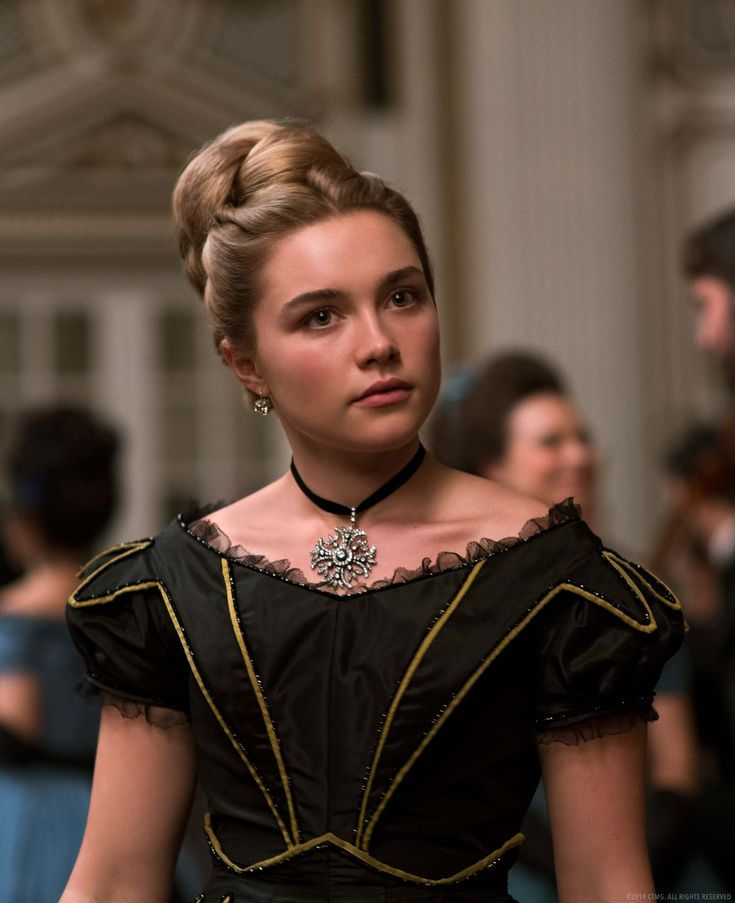Little Women doesn't reject Victorian womanhood: it embraces it
- Ariana Glaser

- Jan 11, 2025
- 6 min read
Updated: Jul 24, 2025
“Just because my dreams are different than yours doesn’t mean they’re unimportant” (Meg March, Little Women 2019).
Upon its publishing in the late 19th century, Louisa May Alcott’s Little Women firmly engraved its name in the short yet striking list of female-centered literary classics. Further immortalized by its multiple cinematic adaptations, theatrical endeavors, and additional sequels, the semi-autobiographical narrative of Alcott’s life promises to impact every woman — young or old — in some manner of her lifetime. The story pinpoints the ideals of womanhood at its very core, but what makes the novel so inexplicably revolutionary for its time is its defiance of feminine standards.
Early American literature falls short in portraying women to be more than their immediate face value, but Alcott’s independent resolve to explore each attribute which defines each of the four sisters as individually human, rejects this metaphorical box entirely.
Little Women is heavily inspired by Alcott’s life. The four March women are influenced by Alcott and her real-life sisters: The eldest sister, Meg (in real life named Anna Alcott), accepts societal visions of womanhood and exhibits a prim attitude towards the world around her, which she later rejects when she chooses love over wealth; Second-oldest is Jo (based off the author herself) who often laments how much she wishes she were born a boy and resolves to reject ladylike standards through her writing; Next is Beth (short for Elizabeth, in real life), a shy yet softly sophisticated young woman who dies of scarlet fever long before she can decide what life she wants to lead; The youngest, Amy (Abigail May), initially throws away her desire to live a full life in order to fit her grandmother’s image of what a Victorian woman should be. The novel travels through each sister’s journey from youth to adulthood, from naivete to knowledge. Though Alcott paints the eldest sisters to be complete opposites, their deep desire to have their atypical dreams be valued unites them into an unlikely pair.

Meg March is the epitome of Victorian luxury, albeit her family’s wealth doesn’t come close to the riches she’s dreamed of. Though she attempts to keep her desires in check to portray herself as a put-together and proper young woman for her younger sisters to admire, she often envies her friends who flaunt larger dresses and fancier homes than she’s ever known. She understands that in a time of great need, the March family must make their “little sacrifices, and ought to do it gladly,” but she admits that she doesn’t as her mind often wanders to “all the pretty things” she’s imagined (Alcott 8).
Though Meg tries to grow out of what she deems to be selfish desires by marrying into perpetual poverty for the sake of love, she learns that her desires are not something that can be so easily buried when she grows jealous of her friend who can buy whatever she likes and consequently spends money she and her husband do not have to buy an expensive silk. Meg’s morals do catch up to her, and she sells the silk to buy her husband a much-needed coat instead. However, Meg’s temptations foster a very humane desire from her youth to match up to the luxuries she’s spent her life admiring.
“Thou makest éxtremes meet, and Poverty / Join hand on with Excess: both alike feel / Void, want, and what cures one would th' other heal” (Ellison).
Feminine greed is so often described as an evil trait in literature, but Meg serves to express that there is no full way of living without bolstering some ounce of regret. Meg loves her husband and does not regret her choice, but this does not diminish her acknowledgement of that which she was forced to relinquish.
Though Meg has always dreamed of settling into a life of spectacular opulence coated with love and beauty, from the very beginning Jo resents the idea that women of the era were conditioned to marry rich if they want to live rich. Her archetype finds her prodding forward to eventually become a successful writer in her own right: one that need not marry into wealth to achieve said wealth. Alcott did adhere to this ideology, as she became one of the most beloved and well-renowned authors of all time, and she did it alone.

Yes, Alcott never married, but Jo did: As a struggling writer in New York, Alcott was forced to adhere to unresolved anti-feminist literary standards in order to ensure her novel would sell. Publishers argued that readers wanted happy endings, and each happy ending these impressionable young readers desired resulted in a wedding. Prior to her engagement, Jo completely rejects every inch of femininity; She hates being forced to sit idly as her father battles in the Civil War. Though Jo attempts to rid herself of any trace of ‘feminine weakness’, she learns through her personal arc that such ideas exist in every woman, and they are not something that can or should be ignored. This valuable lesson comes to Jo after she bravely sells her hair to aid in raising funds to nurse her father back to health and cannot help but grieve “her one beauty” (Alcott 159). Her newfound attachment to her feminine locks once she is forced to give them up offers an insight into a soft side of Jo we hadn’t previously met.
Meg and Jo are similar in this nature: They attempt to live too selflessly and oftentimes diminish themselves in the process, as has eternally been asked of women in this age. From the very beginning of the novel, the March sisters are asked to give away their Christmas feast to a family in need, and when Beth later falls ill, Jo does not hesitate to give Marmee the wealth she’d saved to start her career in New York to aid in Beth’s recovery. Their selfless acts in times of need are important in times of such crises, but they are certain to resolve in later resentment when there is not enough goodness to come back to them.
Meg—and Jo, especially—do end up happy, but neither in the life they’d pictured for themselves.

Amy finds herself in a unique position due to psychological pressure when her aunt, displeased with Beth’s illness, Meg’s marriage, and Jo’s tomboyish attributes, convinces Amy that she is her family’s final hope to advance into a prosperous social standing. Following this encounter, Amy travels with her aunt to Europe where she embarks on a new falsely-led life which dismisses her values and fabricates a happiness she knows to be quickly disintegrating. After living in the shadows of her older sisters, Amy nearly marries the dignified Fred Vaughn in order to promise herself a life free of financial burden (but a life full of human regret). However, a chance encounter with Theodore “Laurie” Laurence finds Amy’s true values, and she turns Fred down and marries Laurie instead. Amy’s venture for an elegant and promised future does not come without consequences; While in Europe, Amy misses any final moments she might have shared with her sister, Beth, who dies of scarlet fever.
Finally, Beth symbolizes all that never would be. Elizabeth “Beth” March is the epitome of charity and good, and it is this charitable innocence that leads her to her ultimate demise. While tending to the ill son of the impoverished Hummel family, Beth contracts scarlet fever and falls irreparably ill.
Her original recovery symbolizes the false safety each other sister feels at some point in their arcs (Jo in her dream-filled youth, Amy in her early travels across Europe, and Meg in her honeymoon stage of love), only to be rudely awakened by the tide of tumultuous time.

When the illness returns and eventually takes Beth with it, each sister is forced to face the idea that their childhoods have ended, that they are no longer the “little women” their father so dearly cherished. This sentiment is not entirely bad: “Naturally, Beth's death has a profound impact on the family, but in the sadness there comes an emphasis on the joys of life along with the misfortune…Beth's own struggles with her impending death also provide lessons in faith. At first overcome with sorrow, Beth becomes serene in her final illness, giving herself over to God” (Price). Beth’s newfound faith in her final moments emblematizes acceptance of life, death, youth, womanhood, and finality.
Femininity is not something women should be defined by, but it is also not something they should be ashamed of, as Meg learns when losing herself in love but leaning towards, as Jo learns when grieving her sold hair, as Amy learns when forgetting her true values, and as Beth only begins to learn.







Comments